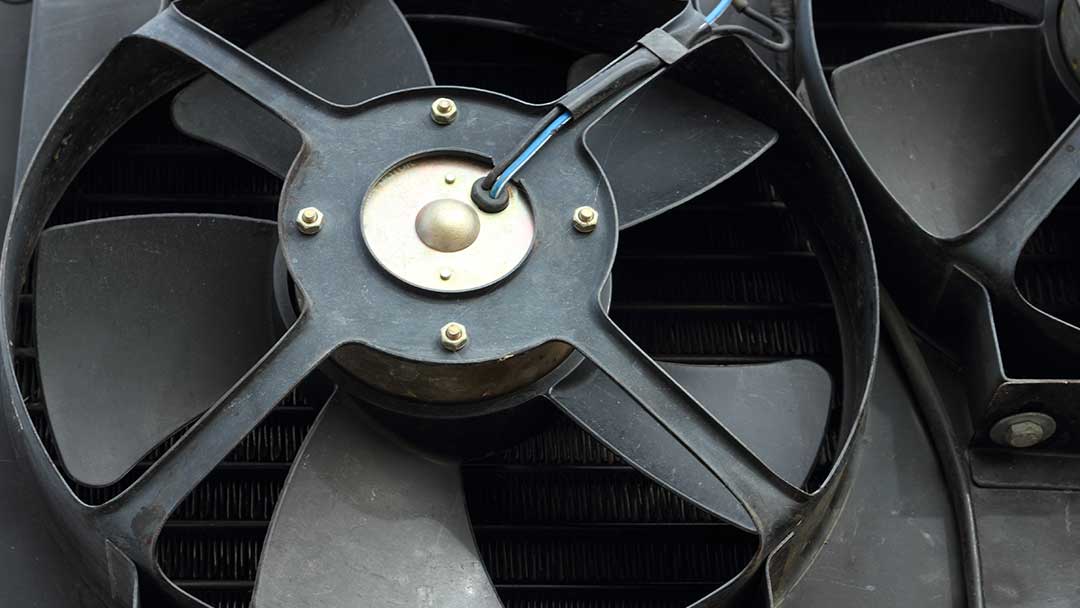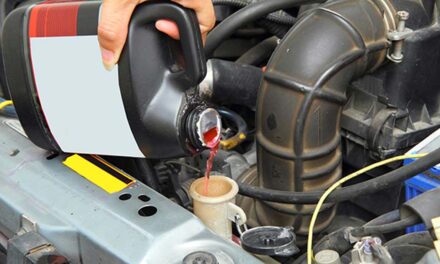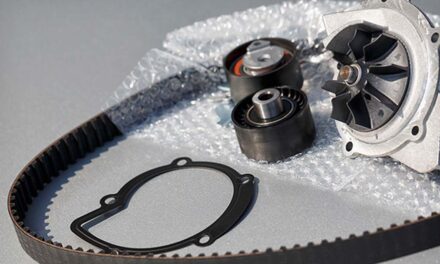Most vehicles that use electric cooling fans, as opposed to engine-driven fans, typically have two fans mounted on the engine side of the radiator.
One fan serves as the main engine-cooling fan, while the other cools the air conditioning condenser. The main cooling fan is activated when the engine temperature exceeds a predetermined level; in most vehicles, this is between 200 and 220 degrees F.
The secondary fan activates when the air conditioning compressor activates. Due to the release of heat by the air conditioning condenser, the main engine-cooling fan activates as well and runs continuously in unison with the air conditioning fan.
Caution should always be observed when working around the engine cooling fan because it is wired to activate any time the engine temperature demands it to do so. Even with the engine off, the fan may activate.
The engine-cooling fan activates only when the vehicle is at a stop or at slow speeds. When the vehicle is moving, there is sufficient air flowing through the radiator to cool the engine. When the vehicle is at rest, no air is flowing through the radiator, and the temperature begins to rise; thus, the fan activates to limit the rise in temperature.
Circuit Description
There are two circuit variations, depending on the vehicle. One is simple in that the coolant temperature sensor, upon reaching a predetermined temperature (usually 200-220 degrees F), activates the engine-cooling fan relay, which turns on the fan. As the temperature drops below the threshold, the sensor deactivates the relay and shuts the fan off.
The powertrain control module (PCM) uses the engine coolant sensor signals to determine when to activate the engine-cooling fan. When it deems it necessary, it activates either a low- or high-speed relay to regulate the fan speed.
The reasoning behind the speeds is to increase fuel economy. The faster the fan runs, the more amperage it draws. The more demand placed on the alternator, the more drag it produces, requiring more horsepower to turn.
Limiting the fan speeds to only those necessary reduces the demand on the alternator; hence, fuel economy increases.
Symptoms
An inoperative fan will cause the engine temperature to rise at slow speeds or at a stop, while the temperature remains normal as long as the vehicle is moving at normal cruising speed.
Causes
Failure of the engine-cooling fan can be caused by a failure of the fan itself, a coolant temperature sensor failure, an engine cooling fan relay failure, loose or corroded connections, a short or open wiring harness, or a failure of the PCM.
Testing
The most expedient way to check the engine cooling fan is to turn on the air conditioning. Both fans should operate as long as the AC is on.
If the fan doesn’t operate, the fan itself may not be at fault. If the AC is inoperative, hotwire the fan to test it. Disconnect the electrical connector at the fan. Using two jumper wires, jump the two terminals to the positive and negative terminals on the battery. It should run if it is good.
Check the fuse and the engine cooling fan relay in the fuse/relay box. The location of the fuse and relay is indicated on the fuse box lid or in the owner’s manual.
A relay is just a remotely controlled switch. There is a circuit diagram on the side of the relay. Pull the relay and jumper wire the switch side of the relay and it should audibly “click” as it activates.
Check the electrical connectors for looseness or corrosion. If the coolant temperature sensor is the cause the check engine light should be on and the PCM should set a coolant temperature sensor failure code.









![[Replace Part Number] Engine Water Pump AW5104,45006,12445113,89018166,130-7340,1307340AT,1312391,251-680,252-782,252-845,WP-9409 [High Performance & Durability] We use premium components and strict quality control standards to ensure superior perfo...](https://m.media-amazon.com/images/I/41kTvw98hHL._SL100_.jpg)